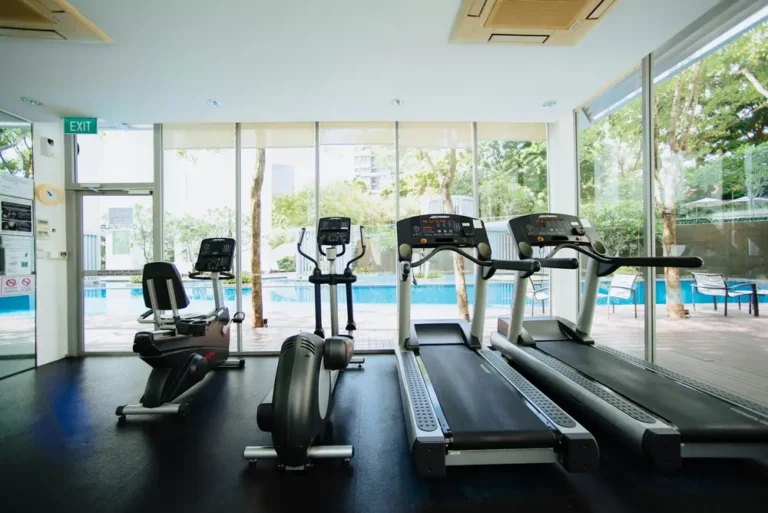Is Burning 200 Calories a Day Good for Weight Loss and Health?
When it comes to shedding those extra pounds, we often hear the mantra: move more, eat less. But how much movement are we talking about here? Specifically, is burning 200 calories a day enough to make a dent in our weight loss goals? It’s a question that’s been on my mind, and maybe yours too.
The answer isn’t as straightforward as you might think. It depends on a myriad of factors, including your current weight, your overall diet, and, yes, your fitness routine. But let’s dive into why burning 200 calories each day might just be a good starting point for many of us looking to lose weight.
Exploring the Impact of Burning 200 Calories Daily
When I started my fitness journey, one question always rattled around in my head: Is burning 200 calories a day actually doing anything for me? Well, after diving into some research and speaking with fitness professionals, I’ve unearthed some pretty insightful answers that I think you’ll find intriguing.
What Does Burning 200 Calories Look Like?
First off, burning 200 calories can seem like a mystery. What does it really entail? Well, it’s less about the specific activity and more about the effort. For example, a study showed that five men doing sprint interval training on stationary bikes could burn around 200 calories by interspersing five 30-second intense intervals with 1 minute of easy cycling. This means you don’t have to commit to long, drawn-out sessions to see benefits. Short bursts of high intensity can do the trick.
To put it into perspective, here are a few common activities and the approximate time it takes for a 185-pound individual to burn 200 calories:
- Walking at 4mph: 30 minutes
- Jogging: 20 minutes
- Swimming laps: 20 minutes
- Cycling at a moderate pace: 25 minutes
These aren’t hard rules, as everyone’s body responds differently to exercise, but they give a general idea of the commitment needed.
The Role of Moderate Caloric Burn in Overall Health
You might be wondering, is burning just 200 calories a day even worth it? According to health experts, absolutely. Regular, moderate exercise that burns about 200 calories a day can contribute significantly to your overall health over time. For older adults, especially, a combination of exercise with a moderate caloric restriction was shown to improve heart health substantially.
But it’s not just about the numbers. Burning 200 calories a day is also about creating a habit of physical activity. It’s a realistic and manageable goal that can help pave the way for a consistent exercise routine. This consistency is key to improving cardiovascular health, building endurance, and, yes, facilitating weight loss when paired with a balanced diet.
Moreover, this level of activity helps in building muscle mass and preventing the loss of muscle that can come with age and weight loss. Regular, moderate exercise, even just burning 200 calories a day, can make a remarkable difference in how I, and possibly you, feel day-to-day.
So, while it might seem small, the impact of burning 200 calories daily can be profound, contributing to a healthier, more active lifestyle without requiring hours upon hours in the gym. It’s been a game-changer for me, and it could be for you, too, especially if time is a scarce resource in your busy life.
The Science Behind 200 Calorie Workouts
When it comes to staying active and managing weight, the idea of burning just 200 calories a day through exercise might seem modest. Yet, there’s more to this figure than meets the eye. This part of our discussion dives into the science behind 200-calorie workouts, shedding light on how different activities stack up and what factors influence calorie expenditure.
Caloric Burn Across Different Activities
I’ve always been fascinated by how various activities lead to different rates of calorie burn. It turns out the type of workout really does matter. High-intensity interval training (HIIT), for instance, can be particularly effective. A vigorous HIIT session may burn up to 400 calories in an hour by combining activities that work with various parts of the body. On the other hand, activities like walking at a brisk pace or engaging in low-impact aerobics have their own set of benefits and calorie-burning potentials. Here’s a quick glance at how some specific activities compare in terms of caloric expenditure:
| Activity | Calorie Burn (30 min, 155-pound person) |
|---|---|
| Running (9 mph) | 409 calories |
| Low-impact aerobics | 160-200 calories |
| Walking (4 mph) | Approximately 137 calories |
Factors Affecting Calorie Expenditure (Age, Weight, Intensity)
Not all calories are burned equally. Several pivotal factors, including age, weight, and exercise intensity, play significant roles in determining how many calories someone burns during a workout. Heavier individuals typically burn more calories because their bodies require more energy to perform the same tasks. Likewise, younger people tend to have a slightly higher caloric burn due to more muscle mass and higher basal metabolic rates. However, the intensity of the workout is a game-changer. Pushing for more vigorous or intense activity levels leads to greater calorie expenditure, emphasizing the quality rather than the quantity of the workout.
Exercise Examples for 200 Calorie Burn
So, how can you practically burn around 200 calories in your daily routine? Let’s consider some exercise examples that illustrate the accessibility of this goal. A 185-pound individual could achieve this by walking briskly for 30 minutes. For those who weigh less, introducing a mix of activities or increasing intensity might be necessary. For instance, combining 10 minutes of jogging at 5 mph (80 calories) with 20 minutes of low-impact aerobics (approximately 120 calories) could also reach the 200-calorie mark. These combinations show that with a little planning, hitting a 200-calorie burn each day is an attainable and flexible goal.
Health Advantages of Regular Moderate Exercise
The health benefits of regular moderate exercise extend far beyond just shedding a few pounds. It encompasses a holistic improvement in both physical and mental well-being. Let’s dive into some of these benefits.
Weight Management and Caloric Burn
One of the most straightforward benefits of burning 200 calories daily is its role in weight management. Integrating daily activities that burn this amount of calories contributes significantly to creating a calorie deficit, which is crucial for weight loss. It’s not just about the numbers on the scale either; maintaining a healthy weight reduces the risk of developing obesity-related conditions such as type 2 diabetes and certain types of cancer. What’s fascinating is that these activities don’t need to dominate your day. A brisk 30-minute walk or a short high-intensity workout could do the trick.
Cardiovascular Health and Reduced Aortic Stiffness
The impact of moderate exercise on heart health cannot be understated. Regular activity helps in managing blood pressure, reducing bad cholesterol, and improving good cholesterol – all vital factors for heart health. A particular aspect that caught my attention was the effect on aortic stiffness, a predictor of cardiovascular issues. A study showed that obese older adults who reduced their caloric intake by about 200 calories daily and engaged in regular aerobic exercise witnessed an improvement in their aortic stiffness. This benefit underscores the importance of combining dietary changes with exercise for cardiovascular wellness.
Mental Health Benefits
It’s not just the body that reaps the rewards; the mind does too. Exercising releases endorphins sometimes referred to as the body’s natural mood lifters. Regular moderate exercise has been linked to reductions in symptoms of depression and anxiety. It also boosts overall mood, increases energy levels, and can improve sleep quality. Knowing that a daily 200-calorie burn could contribute to such significant mental health benefits certainly adds another layer of motivation for me.
Determining Personal Caloric Burn Requirements
When it comes to burning 200 calories a day, understanding personalized caloric burn requirements can add an illuminating perspective to any weight loss journey. So, let’s dive straight into the nitty-gritty of this process.
Understanding Basal Metabolic Rate (BMR)
To start, it’s essential for me to unwrap what Basal Metabolic Rate (BMR) is. In simple terms, BMR is the number of calories my body needs to perform fundamental life-sustaining functions while at complete rest. This includes everything from keeping my heart beating to maintaining my body temperature. Calculating my BMR gives me the baseline of calories burned without adding any additional activity. Often, people use formulas like the Harris-Benedict Equation or the Mifflin-St Jeor Equation, which consider weight, height, age, and gender. For example, the Mifflin-St Jeor formula is as follows:
- For individuals assigned male at birth (AMAB):
10 x weight in kg + 6.25 x height in cm - 5 x age in years + 5 - For individuals assigned female at birth (AFAB):
10 x weight in kg + 6.25 x height in cm - 5 x age in years - 161
This calculation not only enlightens me about my body’s caloric needs but also sets the stage for understanding my total calorie-burning capabilities.
Components of Total Daily Energy Expenditure (TDEE)
Total Daily Energy Expenditure (TDEE) steps beyond BMR by incorporating all the calories I burn in a day, including those from physical activities and digestion. TDEE is fundamentally composed of various elements:
- Basal Metabolic Rate (BMR): As described earlier, this is the amount of energy my body needs at rest.
- Physical Activity: This includes all the exercises I undertake, dramatically impacting my TDEE. It can vary widely depending on how active I am throughout the week.
- Thermic Effect of Food (TEF): This represents the energy required to digest, absorb, and process the nutrients I consume. Certain foods, rich in protein and fiber, can boost my TDEE since they require more energy to be metabolized.
- Non-Exercise Activity Thermogenesis (NEAT): These are the calories burned during non-exercise activities, such as doing chores or fidgeting.
By adding these components together, I can get a comprehensive overview of my daily caloric expenditure, allowing me to plan my diet and exercise regimen more effectively.
In some cases, burning 200 calories a day may already be the case for you, so you will need to step up your game and start burning up to 400 calories a day.
Tailoring Caloric Burn for Individual Weight Loss Goals
Knowing my TDEE is one thing, but tailoring my daily caloric burn to suit my weight loss goals is another. It’s about creating the right caloric deficit – consuming fewer calories than I burn – to lose weight at a safe, sustainable pace. Here’s a simple breakdown of how I might adjust my caloric intake and exercise routine depending on my goals:
- For Weight Maintenance: I’d aim to consume approximately the same number of calories as my TDEE.
- For Weight Loss: I’d target a caloric intake that’s below my TDEE. A deficit of 500 calories per day is generally advised for safe weight loss, translating to burning an extra 200 calories on top of my normal activities could contribute significantly to this goal.
- For Weight Gain: Conversely, consuming more than my TDEE is necessary, focusing on a caloric surplus.
Conclusion
So there you have it! Burning 200 calories a day can indeed be a stepping stone towards a healthier lifestyle. It’s not just about the number but how you achieve it and pair it with mindful eating habits. Remember, every small step counts, and consistency is key. Don’t get too hung up on the specifics; instead, focus on finding activities you enjoy and can stick with over time. And always listen to your body—it’s your best guide to what works for you. Here’s to making those small changes that lead to big results!
FAQ – Frequently Asked Questions
Are there easy ways to incorporate calorie-burning activities into my day?
Yes, there are several easy ways to incorporate activity into your day. These include taking regular breaks to walk or do steps, engaging in resistance training, or adding another exercise session to your day. Even short 10-minute exercise sessions can be beneficial.
How accurate are treadmill calorie counters?
Treadmill calorie counters can give fairly accurate estimates, especially newer machines. However, there is a margin of error as individual rates of calorie burn can vary. For more accurate readings, inputting your specific information like age and weight is recommended







